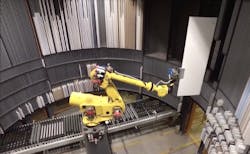Beyond Aveva’s larger visions around combining its technologies to connect plant floor and enterprise decision-making, the company is also focusing on making it easier for smaller companies to access technologies once reserved for larger companies.
One of the first examples of this, planned for released in 2023, is Aveva’s edge-to-enterprise MES (manufacturing execution system).
Aveva’s plan for its edge-to-enterprise MES is to deliver a suite of cloud- and edge-based software that ranges from “basic productivity apps to more complex operations management apps,” said Troy. “The idea is to provide a solutions footprint that better aligns with customer needs, reduces total cost of ownership, and allow customers to move up the maturity curve as their business needs evolve.”
Aveva’s Insight cloud and edge MES will be used to deliver systems, such as overall equipment effectiveness (OEE) and work instructions, with “little or no solution footprint,” Troy said. He added that Aveva is also looking to provide basic quality functions to this software package in Q1 2023. “These solutions are all about reducing time to value and getting quick wins,” he said.
The underlying technology that enables this is a hybrid cloud architecture, with MES applications running at the edge and in the cloud. “Customers will have flexibility to choose deployment options (between cloud- or edge-based apps) that align with their business needs,” Troy said. “The cloud will house Aveva Data Hub (to store MES history and enable data sharing), as well visualization dashboard technology and predictive/prescriptive analytics. A centralized MES app deployed at the edge will provide edge management capabilities.”
Beyond the initial edge and cloud MES offerings planned for 2023, Troy said planned 2024 rollouts will be more analytics focused. He added that all of this will be available via Aveva Flex (software-as-a-service) subscriptions, which allows users to purchase specific capabilities as they need them.
About the Author
David Greenfield, editor in chief
Editor in Chief

Leaders relevant to this article:

